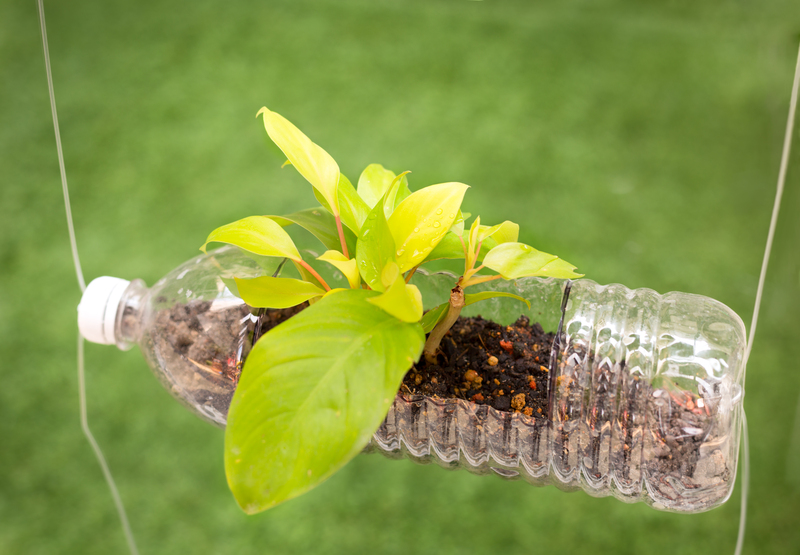How Community Drop-Off Programs Make Recycling Pots and Pans Easy
Recycling pots and pans can seem confusing, but community drop-off programs have made it simpler than ever before. In a world increasingly focused on sustainability, disposing of old cookware in an eco-friendly way is essential. Whether your frying pan has lost its non-stick surface or your favorite pot has seen better days, it's important to recycle these items instead of sending them to landfills.
Why Recycle Pots and Pans?
Most pots and pans are made from metals such as aluminum, stainless steel, or copper, which are valuable resources that can be reused. Landfills are already overloaded, and metal takes hundreds of years to decompose. Instead of contributing to unnecessary waste, recycling cookware allows these materials to be turned into new products, saving energy and reducing the demand for new raw materials.

Understanding the Challenges of Recycling Cookware
While recycling old pots and pans is the right choice for the environment, it isn't always straightforward. Standard curbside recycling programs often won't accept cookware because:
- They're made of mixed materials (metal, plastic, rubber handles).
- Non-stick coatings (like Teflon) complicate the process.
- They're often too large or heavy for curbside collection bins.
- Recycling facilities have specific requirements for metals.
This leaves many individuals unsure of how or where to dispose of these items. Fortunately, community drop-off programs for recycling pots and pans provide a simple and impactful solution.
What Are Community Drop-Off Programs?
Community drop-off programs are local initiatives that offer designated collection points where residents can bring items that standard recycling services won't accept. These sites are often run by municipalities, environmental nonprofits, or local waste management companies. Some even partner with scrap metal yards or specialized recycling centers to ensure that your pots, pans, and other kitchen items are handled properly.
Main Features of Community Drop-Off Programs
- Convenience: Drop-off locations are usually accessible and clearly marked.
- Expertise: Staff can answer questions about what can and cannot be recycled.
- Responsibility: Items are processed correctly, ensuring recycling best practices.
- Education: Many programs offer guidance on sustainable disposal and recycling tips.
How to Prepare Pots and Pans for Recycling
Before taking your cookware to a community recycling drop-off, it's important to prepare the items properly. This makes the recycling process easier and safer for both you and the facility.
Steps for Preparing Cookware
- Clean the cookware: Remove all food residues and wash the items thoroughly.
- Separate materials: If possible, detach any non-metal parts such as plastic handles or glass lids.
- Check for coatings: Inform the collection staff if the cookware has non-stick coatings, as they may require special processing.
- Bundle items: Group similar metals together (for example, all aluminum pans in one box).
Different Types of Drop-Off Programs for Recycling Pots and Pans
Community drop-off programs for recycling pots and pans come in various forms to meet the needs of diverse neighborhoods. Here are some common types:
- Municipal Recycling Centers: Most cities or counties operate local waste drop-off sites where residents can bring recyclable metals, including old cookware.
- Charity Programs: Some charities accept gently used pots and pans, either for direct donation or for recycling through specialized partners.
- Retail Take-Back Initiatives: Certain retailers offer take-back programs for old cookware, sometimes in partnership with cookware brands.
- Scrap Metal Yards: Local scrap yards can often recycle metal cookware, though they typically do not want items with plastic or rubber parts.
- Special Community Events: Earth Day clean-ups and sustainability fairs often include drop-off bins for hard-to-recycle items, including pots and pans.
Benefits of Recycling Pots and Pans Through Community Programs
Engaging with your local community drop-off program for recycling pots and pans brings a range of benefits, both for you and the wider environment:
-
Environmental Impact:
- Reduces landfill waste.
- Lowers the energy needed for mining new metals.
- Prevents harmful substances from leaching into the soil and water.
- Supports Local Initiatives: Community programs foster local engagement and encourage other forms of eco-friendly behavior.
- Saves Space in Your Home: Get rid of clutter and old items you no longer use.
- Opportunity to Donate: Slightly used cookware can help families in need if donated through appropriate programs.
Examples of Successful Community Drop-Off Programs
Many communities have established effective solutions for recycling cookware. Here are a few notable case studies:
City-Run Recycling Days
Numerous municipalities offer "Recycling Day" events once or twice a year, where residents can drop off bulky metal goods, including pots and pans. Staff at these events direct individuals to the correct drop-off bins and answer questions about recycling processes.
Nonprofit Partnerships
Some areas have nonprofits that coordinate with local governments to organize regular drop-off days. These programs often offer additional educational resources about sustainable living and waste management.
Retail Cookware Recycling Initiatives
A few cookware brands and chain stores have stepped up by offering in-store collection points for customers wishing to retire old cookware when buying new products. These programs streamline the recycling process by handling the transportation and materials separation in-house.
How to Find a Drop-Off Program Near You
If you're wondering where to recycle pots and pans in your area, start with these steps:
- Search Online: Use search engines with terms like "recycling drop-off pots and pans near me," "community cookware recycling," or "metal recycling center."
- Check Municipal Websites: Most city or county waste management websites have details about drop-off locations, operating hours, and accepted items.
- Ask Local Retailers: Some home goods stores or kitchenware retailers may offer seasonal take-back programs.
- Connect with Nonprofits: Environmental groups or social service organizations often sponsor hard-to-recycle collection events.
Frequently Asked Questions About Recycling Pots and Pans
Can I Recycle Cookware with Non-Stick Coating?
Non-stick coatings such as Teflon complicate recycling, but many community programs accept these items and process them through specialized facilities. Always ask staff at the drop-off point or check online before bringing Teflon-coated pans.
Can I Donate Pots and Pans Instead of Recycling?
If your cookware is still in good working condition, consider donating to a local shelter or charity. Many organizations will accept gently used pots and pans, giving them a second life before eventual recycling.
Are Glass Lids Recyclable?
Glass lids are usually made from tempered glass, which cannot go in regular glass recycling bins. However, some community programs accept them as part of their drop-off recycling initiatives.
Can I Put Pots and Pans in My Regular Recycling Bin?
Most curbside recycling programs do not accept pots and pans due to their size, weight, and material mix. Always use the designated community drop-off programs or metal recycling centers.
Sustainable Tips for Extending the Life of Cookware
Before recycling, consider ways to extend the usefulness of your pots and pans:
- Repurpose Old Cookware: Use them as planters, storage containers, or craft projects.
- Refurbish: Sometimes, replacing a handle or deep cleaning can give a worn pot more years of service.
- Donate: Communities and shelters can often use pots and pans that are still functional.

The Environmental Impact of Recycling Pots and Pans
Every pot or pan recycled saves precious raw materials and reduces greenhouse gas emissions from mining and metal refining. According to the Environmental Protection Agency (EPA), recycling aluminum, for example, saves up to 95% of the energy needed to create the metal from raw ore. Even small actions, like dropping off a single pan, add up over time and play an important role in the global movement toward sustainability.
Conclusion: Community Programs Make Recycling Pots and Pans Simple and Sustainable
Community drop-off programs have transformed how we recycle old cookware, making it easy for residents to participate in eco-friendly waste management. By providing clear guidance, convenient locations, and expert support, these programs ensure that pots and pans avoid landfills and are instead recycled into new, useful products. The next time you clean out your kitchen, remember: local drop-off programs make recycling pots and pans easy, effective, and impactful.
Take the sustainable step today and check out your community's cookware recycling drop-off programs. Together, we can make a difference--one pot or pan at a time!
```